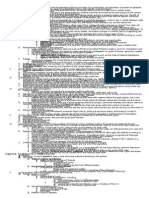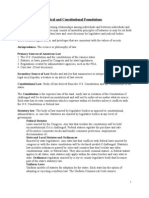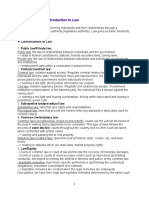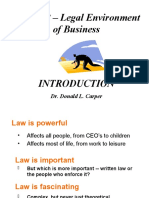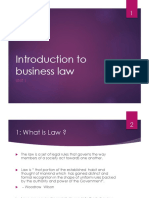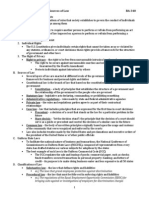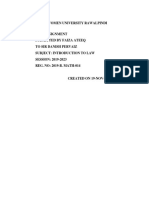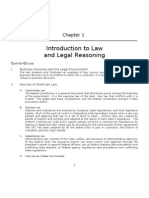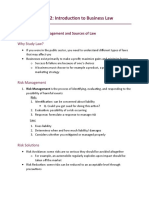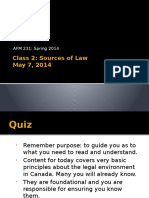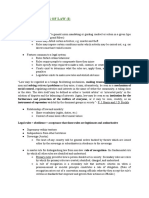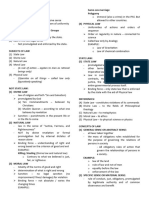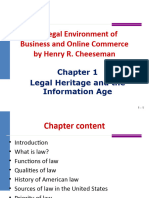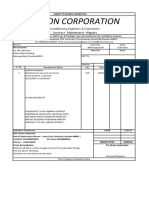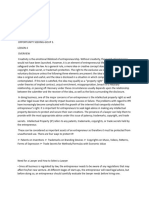0% found this document useful (0 votes)
403 views5 pagesThe Legal Environment of Business Exam #1 Review Sheet CHAPTERS: 1, 4 & 19
This document provides a review of key concepts from Chapters 1, 4, and 19 of a business law textbook.
Chapter 1 discusses the nature of law and different legal philosophies. It also outlines the main sources of American law, including constitutional, statutory, administrative, case, and common law. Chapter 4 examines remedies available in courts of law versus courts of equity. Chapter 19 focuses on the powers and functions of administrative agencies, including their ability to make rules and regulations, conduct investigations and hearings, and be subject to legislative and judicial oversight. The document provides an overview of key legal topics to prepare students for an upcoming exam.
Uploaded by
quangphoCopyright
© © All Rights Reserved
We take content rights seriously. If you suspect this is your content, claim it here.
Available Formats
Download as DOC, PDF, TXT or read online on Scribd
0% found this document useful (0 votes)
403 views5 pagesThe Legal Environment of Business Exam #1 Review Sheet CHAPTERS: 1, 4 & 19
This document provides a review of key concepts from Chapters 1, 4, and 19 of a business law textbook.
Chapter 1 discusses the nature of law and different legal philosophies. It also outlines the main sources of American law, including constitutional, statutory, administrative, case, and common law. Chapter 4 examines remedies available in courts of law versus courts of equity. Chapter 19 focuses on the powers and functions of administrative agencies, including their ability to make rules and regulations, conduct investigations and hearings, and be subject to legislative and judicial oversight. The document provides an overview of key legal topics to prepare students for an upcoming exam.
Uploaded by
quangphoCopyright
© © All Rights Reserved
We take content rights seriously. If you suspect this is your content, claim it here.
Available Formats
Download as DOC, PDF, TXT or read online on Scribd
/ 5
